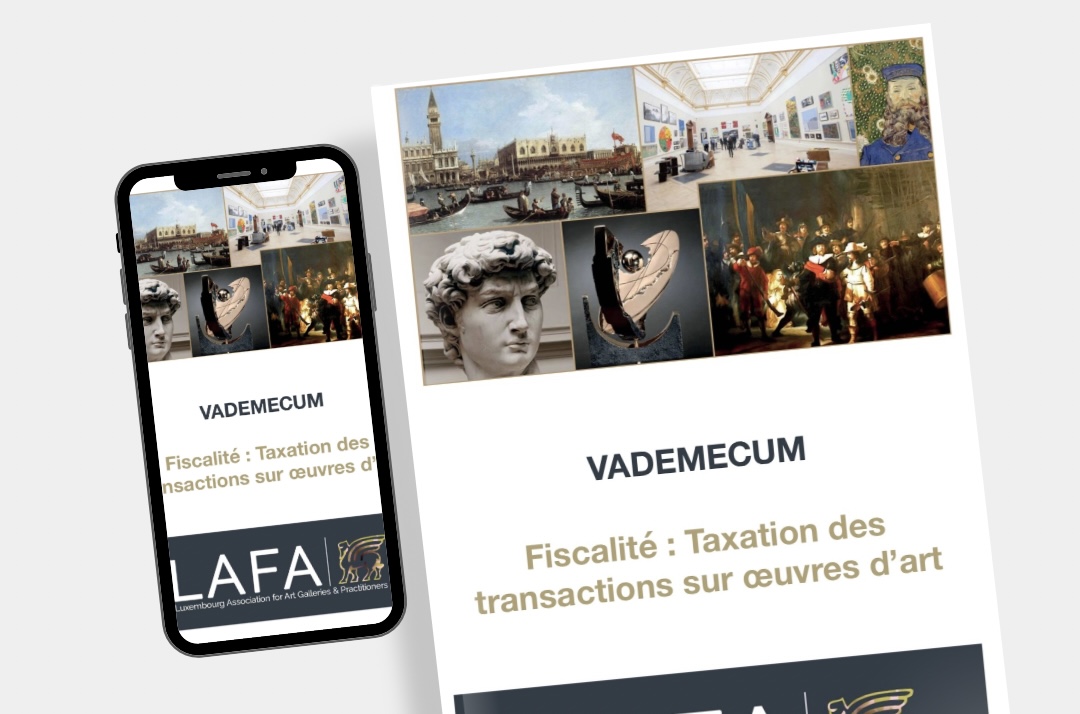The Luxembourg Association for Art Galleries and Practitioners (LAFA) has recently published a comprehensive vademecum designed to assist art market participants in understanding the complex fiscal landscape surrounding art transactions in Luxembourg. This guide is an invaluable resource for art dealers, gallery owners, advisors, transporters, auctioneers, legal professionals, and collectors.
The Growing Art Market in Luxembourg
Luxembourg’s art market has seen significant growth in recent years, driven by high purchasing power and a vibrant cultural scene. The annual Luxembourg Art Week, held every November since 2015, attracts an increasing number of galleries and visitors. The opening of a high-security freeport in 2014 further boosted the market, offering storage, restoration, trade, and private exhibition services for art and precious goods.
Despite the country’s low VAT rate, Luxembourg’s 8% import tax on art, higher than that of neighboring countries, presents a challenge. Improving this fiscal environment could attract a larger share of the global art market to Luxembourg.
Understanding VAT on Art Transactions
Luxembourg’s VAT system aligns with EU directives, with specific provisions for art transactions:
- Local Purchases: Art bought directly from artists or their estates is subject to an 8% VAT. Purchases from other VAT-registered sellers incur a 17% VAT. However, the VAT can be reduced if the artist or dealer qualifies for a small business exemption.
- Import VAT: Art imported into Luxembourg is taxed at a reduced rate of 8% on the CIF value. This rate is set to drop to 7% starting January 2023. If art is stored in the Luxembourg High Security Hub, taxes are deferred until the artwork exits the facility for final importation into the EU or export outside the EU.
- Intra-EU Transactions: Sales between VAT-registered businesses are VAT-exempt in the seller’s country but subject to VAT in the buyer’s country. Luxembourg applies a 17% VAT on such acquisitions, reduced to 7% for purchases directly from artists or their estates.
Key Legal and Regulatory Considerations
Export and Import Regulations:
- Exporting cultural goods from Luxembourg requires authorization, especially for items over 100 years old or created by deceased artists. This process ensures compliance with EU regulations and the UNESCO 1970 Convention on combating illegal trade in cultural goods.
- Certain materials, like ivory and tortoise shell, are restricted under CITES regulations, prohibiting their import.
Special Provisions for Art Professionals:
- ATA Carnet System: This facilitates the temporary export of artworks for exhibitions and fairs, exempting them from import duties during the event and upon their return.
- Margin Scheme for Art Dealers: Art dealers can benefit from VAT on the margin scheme, which applies to eligible second-hand art, collectibles, and antiques. This scheme allows VAT to be calculated on the profit margin rather than the total sale price, providing significant tax advantages.
Conclusion
Luxembourg offers a dynamic and growing art market with a favorable tax environment, although certain fiscal barriers remain. By understanding the detailed provisions outlined in LAFA’s guide, art professionals can navigate these complexities, ensuring compliance and optimizing their fiscal strategies.
For a more detailed exploration of these topics, including practical tips and expert insights, the full LAFA vademecum about art transactions taxes is available for members in print or digital.
.

